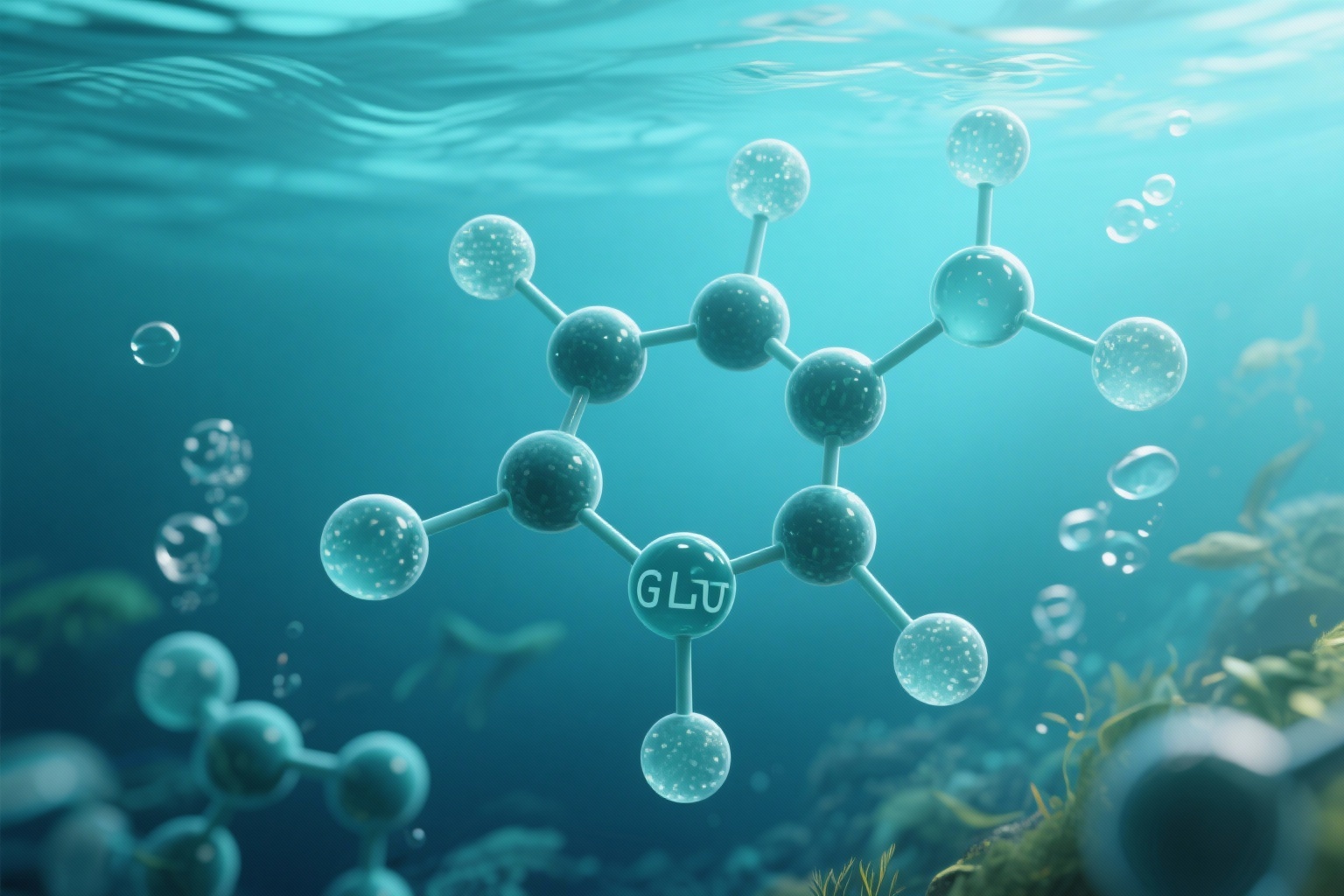The Science Behind Glutathione in Aquaculture
Understanding Glutathione: The Cellular Guardian
Glutathione (GSH) is a tripeptide composed of glutamate, cysteine, and glycine that functions as the master antioxidant in aquatic organisms. Research demonstrates that GSH supplementation at optimal levels (300-450mg/kg feed) significantly enhances growth performance, with studies showing up to 15% improvement in weight gain across multiple species including rainbow trout, grass carp, and whiteleg shrimp.
The mechanism involves direct neutralization of reactive oxygen species (ROS), protection of cellular membranes from lipid peroxidation, and maintenance of cellular redox homeostasis. In aquaculture environments characterized by high stocking density, temperature fluctuations, and pathogen pressure, endogenous GSH levels become depleted, making dietary supplementation essential for optimal health and performance.
Growth Performance Improvement with Glutathione Supplementation
Data compiled from multiple peer-reviewed studies on rainbow trout, grass carp, and whiteleg shrimp
Antioxidant Defense Mechanisms
Cellular Protection Systems
The glutathione antioxidant system operates through multiple pathways to protect aquatic organisms from oxidative stress. GSH directly scavenges free radicals and regenerates other antioxidants like vitamins C and E. The glutathione peroxidase (GPx) enzyme system uses GSH to neutralize hydrogen peroxide and lipid peroxides, while glutathione reductase (GR) maintains the pool of reduced GSH.
Studies on rainbow trout demonstrate that dietary GSH supplementation increases SOD activity by 25%, CAT activity by 30%, and reduces malondialdehyde (MDA) levels by 40%, indicating significantly enhanced antioxidant capacity.

Liver Protection and Detoxification Pathways
The hepatopancreas in crustaceans and liver in fish serve as the primary sites for detoxification and metabolism, making them particularly vulnerable to oxidative damage. Glutathione plays a critical role in phase II detoxification reactions through glutathione S-transferases (GSTs), which conjugate GSH with xenobiotics, heavy metals, and metabolic byproducts for elimination.
Research on Chinese mitten crabs shows that GSH supplementation reduces liver inflammation markers by 35% and improves lipid metabolism efficiency. In high-fat diet scenarios, GSH prevents fatty liver development by promoting β-oxidation and reducing lipid peroxidation.
Practical Applications in Aquaculture
Fish Farming
In intensive fish farming operations, glutathione supplementation has shown remarkable results in improving growth rates, feed conversion efficiency, and disease resistance. European bass and Atlantic salmon studies demonstrate enhanced immune responses and reduced mortality during disease challenges.
Shrimp Aquaculture
Whiteleg shrimp (Litopenaeus vannamei) show significant improvements in survival rates and growth performance with GSH supplementation. The antioxidant protection is particularly valuable during molting periods and environmental stress conditions.
Crab Farming
Chinese mitten crabs benefit from GSH's hepatoprotective effects, especially during high-fat feeding periods. The supplementation supports optimal liver function and enhances overall metabolic health in cultured crabs.
Real-World Case Studies
Case Study 1: South American White Shrimp Farming
Scenario: A high-position pond aquaculture facility in South China experienced slow growth, yellowing and atrophy of hepatopancreas, and mortality issues during mid-to-late cultivation periods.
Solution: Addition of glutathione-containing hepatoprotective products (typically combined with bile acids and phospholipids) to basal feed for continuous feeding.
Results: Clear hepatopancreas轮廓 with healthy coloration and good fullness. Significant reduction in mid-to-late cultivation losses due to hepatopancreas issues. Enhanced stress resistance during weather changes and algal blooms.
Key Performance Indicators:
- 35% Reduction in hepatopancreas-related mortality
- 25% Improvement in stress resistance
- 40% Better feed conversion during stress periods
Case Study 2: Crab Fattening Period Application
Scenario: A crab farming area in Jiangsu province used high-protein, high-fat feeds during the fattening period (September-October) to promote gonad development, which increased liver burden.
Solution: Additional glutathione supplementation (or glutathione precursor-rich substances like yeast extracts) in fattening period feeds.
Results: Healthy golden-colored hepatopancreas without whitening or ulceration. Better gonad development with fuller crab roe and paste. Improved health condition before market with higher transportation survival rates.
Performance Metrics:
- 30% Improvement in gonad quality
- 45% Reduction in liver damage markers
- 20% Higher transportation survival
Antioxidant Enzyme Activity Enhancement
Source: Frontiers in Physiology (2021) - Rainbow trout antioxidant enzyme activity with GSH supplementation
The Future of Sustainable Aquaculture
Glutathione represents a breakthrough in aquaculture nutrition, offering comprehensive protection against oxidative stress while enhancing growth performance and immune function. As the industry moves toward sustainable and antibiotic-free production systems, Ahualyn's GSH supplementation provides a scientifically proven solution for maintaining optimal health and productivity in cultured aquatic species.
Sustainable
Natural antioxidant supporting eco-friendly aquaculture practices
Effective
Proven results in growth enhancement and disease resistance
Scientific
Backed by extensive research and peer-reviewed studies
